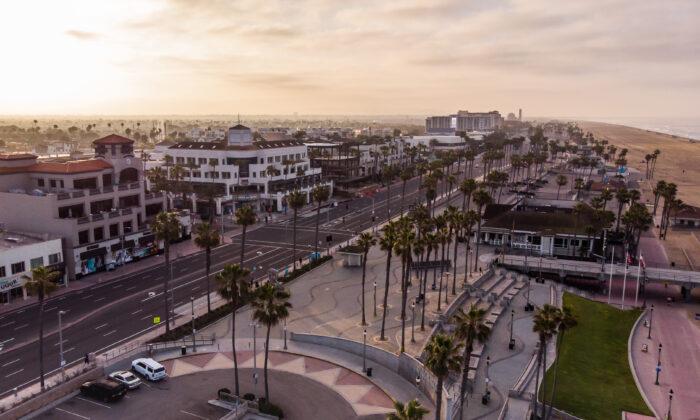Huntington Beach city council will consider on April 5 allowing electric bicycles (e-bikes) on the city’s popular beach trail and other areas, the same day officers intend to enforce an e-bike ban.
Existing regulations constitute an e-bike ban on the city’s beaches, bike paths, and sidewalks. Councilmembers Mike Posey and Natalie Moser are leading the effort to lift the ban while enforcing speeding restrictions.
“I want to eliminate the prohibition of e-bikes on the city bike trail,” Posey told The Epoch Times.
“The problem isn’t electric bikes on the bike trail. The problem is electric bikes and, really, non-electric, non-powered bikes exceeding the speed limit and making it unsafe for people walking.”
During the pandemic, Huntington Beach’s e-bike sales increased as residents and visitors sought entertainment during a time when many traditional options were closed.
The city council announced on March 1 that it would begin issuing citations and enforce the existing e-bike ban, after receiving numerous letters calling for enforcement of the e-bike ban due to safety concerns of individuals riding them at high speeds around pedestrians, bikers, skaters, and children.
Posey objected to the ban.
“The trail isn’t for the exclusive use of walkers, and it’s not for the exclusive use of non-motorized bicycles,” he said. “It’s a recreational trail that should be accessed by just about everybody.”
Regular bikes can create the same safety concerns at high speeds as the e-bikes, Posey said.
“The issue of course is speed. But you can ride a road bike as fast as you can ride an electric bike—maybe even faster, if you’re an athlete.”
In 2017, the city prohibited motorized bicycles, regardless of power source, to essentially “eliminate the proliferation of internal combustion-powered motorized bicycles,” on the city’s beach path, Posey said. However, this was prior to the popularity of e-bikes.
“E-bikes were sort of way off the radar. I didn’t even really think about the implications of banning power, no matter the source, to include e-bikes, because they just weren’t that popular,” he said.
Posey wants to reinstate e-bikes by changing the current ordinance to prohibit only “powered by internal combustion.”
At the same time, Posey wants to step up speed enforcement with signage, lighting, or reader boards that encourage slowing down.
“The whole impetus for this is to keep as many cyclists on the beach path rather than on Pacific Coast Highway. Because the Pacific Coast Highway ... can be more dangerous for bicyclists than the bike trail,” Posey said.
“Especially those that that can’t get out and enjoy the fresh air without the benefit of having an electric-powered bicycle—the elderly, [and those who] are not able to pedal under their own power.”





